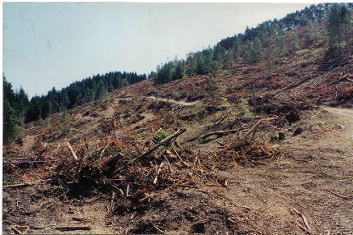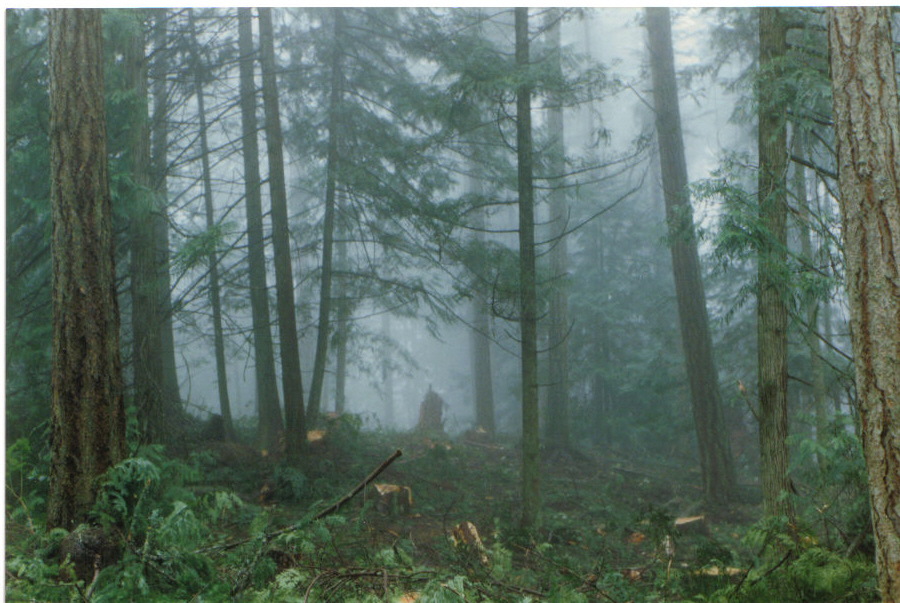Galiano relies on
groundwater - the harvest of the heavens.
The whole forest to be clear-cut in
1987.
After the take-over of
MacMillan Bloedel by Noranda, their Chief Forester came to Galiano and
told the community openly and very honestly that the island's forests
would be clear cut and replanted over an estimated twenty years. This was
accepted by a saddened community. Logging began on the east side and
seemed to be going more rapidly than expected. The spectacular east coast
trail was logged with some trees saved along the shore as the islanders
pleaded. Eagle nests about a kilometer apart along the shoreline were left
with the nest tree standing alone in a clear-cut. The foreshore is a
sensitive area where two ecosystems of land and sea meet, and the
operation along the shoreline was watched anxiously. However, opposition
to clear-cutting mounted as the cut came closer to residential areas,
harvesting right up to the borders, changing climate in peoples' gardens,
filling the air with smoke from the burning piles of debris - leaving
watersheds bare to run-off rather than absorption.
Clear - Cut Alternatives
A group called Clear-Cut Alternatives formed to negotiate on
behalf of the community. Their first success was saving a leave strip
toward the south end along the roadside through part of the forest. The
concern of the trustees was mainly the effect of clear-cutting, especially
on high land, on the groundwater supply. Good water is every community's
life-line, and an island with finite borders does not have piped-in water
from elsewhere. Galiano has no large natural lakes. Most of its streams
are seasonal. All water recharge areas are precious. Experience on other
islands shows small reservoirs can become very polluted. Galiano has not
experimented that way. |

